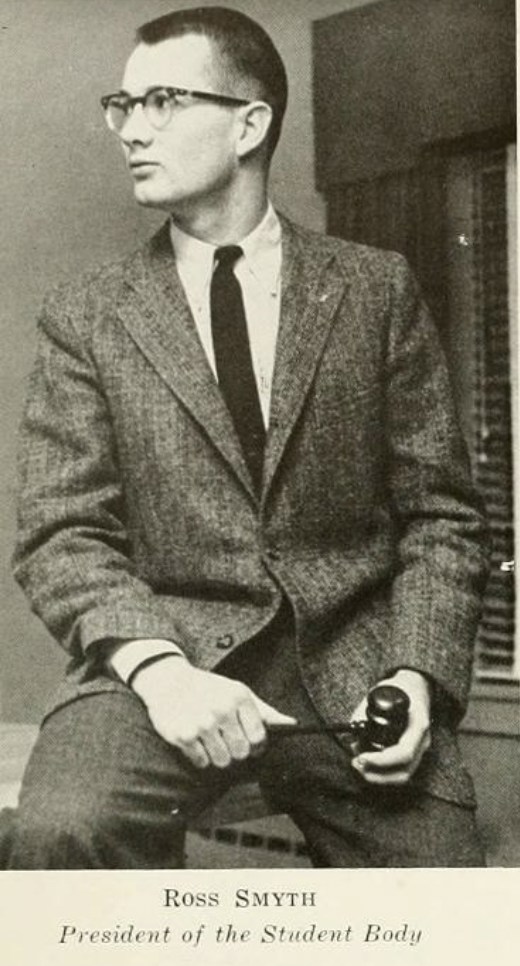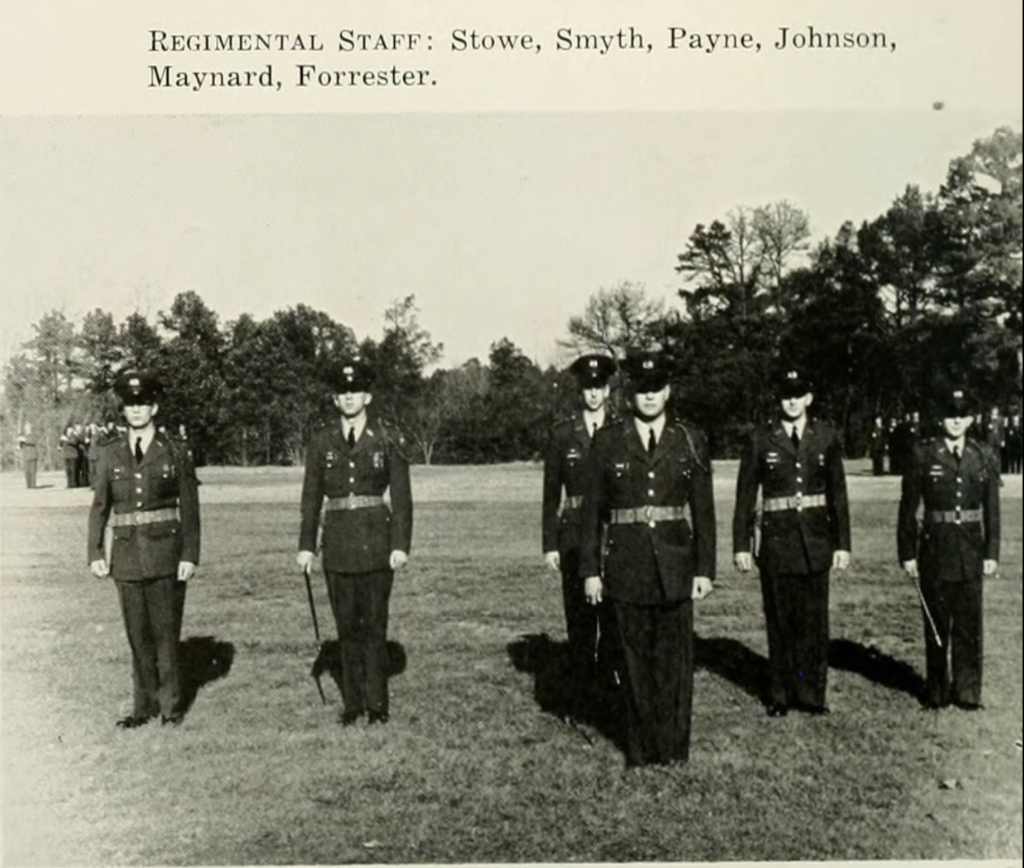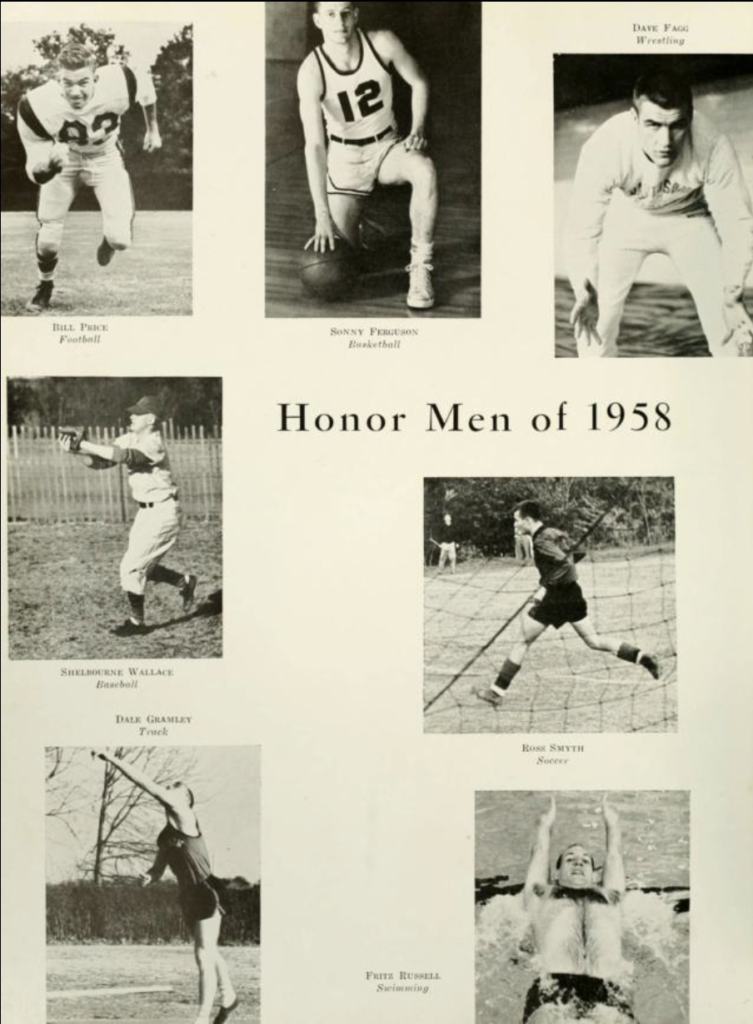Alice Berndt ’22 (she/her) is an English major and Art History minor from Maplewood, New Jersey. On campus, she interns in the Van Every/Smith Galleries, writes for The Davidsonian, and is on the editorial staff for both Hobart Park and Libertas.
If there’s one thing I’ve learned about my grandfather since he passed fifteen years ago, it’s how much he loved Davidson College. I recently examined an issue of Quips and Cranks from 1958, his senior year, while working on a project for ENG 422: Creating Narratives. My grandfather, Ross Jordan Smyth, died when I was six years old after a long battle with Alzheimer’s, a disease I never knew him without. As I flipped through the pages of the annual, I saw his face over and over again, at the same age that I am now.

Finding my grandfather alive in the pages of Quips and Cranks — alive and busy — was a special experience. The publication lists each senior along with their campus involvement. My grandfather has eighteen clubs, organizations, and accolades next to his name, taking up noticeably more space on the page than some of his peers [Image 1].
I already knew he was an English major like I am. I knew he helped to launch Davidson’s soccer program as an official varsity sport in 1956 (See The Davidsonian article October 5, 1956 for more information) and was captain during his junior and senior years. And I knew he served as student body president, which at the time also meant heading the Honor Council.


But I didn’t know that he was a cheerleader, in the chapel choir, or on the editorial staff of Quips and Cranks. Through these pages, I learned that my grandfather was serious and professional, as seen in his presidential portrait [Image 2] and a shot from ROTC [Image 3].
At the same time, these pages also suggest how much he enjoyed his time at Davidson, participating in many activities and organizations and getting to know a range of people in the process.

A page in the athletics section titled “Honor Men of 1958” shows my grandfather sprinting across the soccer field [Image 4]. Interestingly, soccer at Davidson only started up again in 1956 after an absence due to students leaving the college to fight in World War II (See Davidson encyclopedia entry for soccer for more information).

In an image in the student government pages, my grandfather is seated at the head of a table holding a gavel, the same one he holds so earnestly in his presidential portrait. This time he’s captured mid-laugh, the other students at the table frozen in similar expressions. That year student government negotiated with the administration about alcohol consumption on campus. The photo’s caption reads “…seeking a clarification of ‘UNDER THE INFLUENCE’” [Image 5].

In the fraternity section, A photo of SAE brothers enjoying a meal is playfully captioned “Bradford and Smyth retain their composure over the masses” [Image 6].

Another SAE page lists highlights from the year as inside jokes including one that reads “Ross WHO?” [Image 7]. Those who knew my grandfather often remark with a laugh that he knew, did, and won everything and everyone. But it wasn’t about being the best it was about genuine interest, curiosity, and passion. I can guess that this line is a nod to his ubiquitous presence at Davidson — the way that his energy flowed throughout campus and touched many people. I hope to have had even a fraction of this impact in my time at Davidson.
Image Citations
Image 1. Davidson College. Quips and Cranks. Davidson: Davidson College, 1958. Page 45.
Image 2. Davidson College. Quips and Cranks. Davidson: Davidson College, 1958. Page 87.
Image 3. Davidson College. Quips and Cranks. Davidson: Davidson College, 1958. Page 91.
Image 4. Davidson College. Quips and Cranks. Davidson: Davidson College, 1958. Page 119.
Image 5. Davidson College. Quips and Cranks. Davidson: Davidson College, 1958. Page 86.
Image 6. Davidson College. Quips and Cranks. Davidson: Davidson College, 1958. Page 185.
Image 7. Davidson College. Quips and Cranks. Davidson: Davidson College, 1958. Page 183.



















